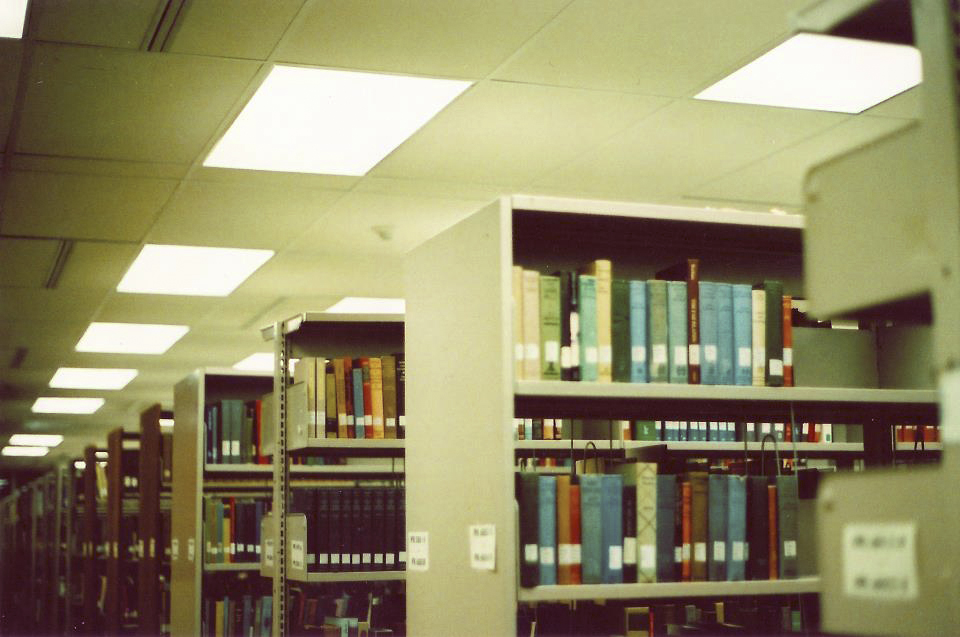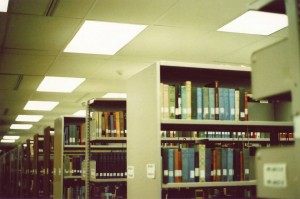A shift in finding sources


For the first time in my four years at Laurier, I signed out a book from the library. I was unable to find the online version of a specific book and was left with no choice but to obtain the soon-to-be obsolete physical copy.
This quest for knowledge was no simple feat. In addition to the walk from my house to the library, I had to actually search the bookshelves, only to be let down when I realized this book was already taken. In a last-ditch effort to find what I was after, I made the trip down the street to the University of Waterloo’s Dana Porter library, where I eventually found the book. All in all, this was a 45-minute ordeal to get a hold of a book that would normally have taken me a matter of seconds to access online.
Once upon a time walking to the library and signing out books was a daily task in the life of a student.Today, in the age of personal computers and widespread Internet connection, the majority of the researching we do takes place online.
According to Luke Bentham, a fifth-year psychology major, the last time he remembers signing out actual books was in his first year.
“I signed out a stack of books for an essay on Winston Churchill,” Bentham recalled.
The university itself has acknowledged this by setting up an online library where students can search for books and journal articles, many of which can be read right on the screen.
“When starting an assignment, my first choice would be to access the online databases,” said Karleigh Buist, a fourth-year communication studies major. “I like the fact that many of the online databases, like EBSCO host search a variety of different databases at once.”
Alexandra Boutros, a communication studies professor at Laurier, is no stranger to this student preference. “Students absolutely do engage with printed material; they read novels, they read newspapers, and magazines, they may also read hard copies of textbooks,” she said.
“When it comes to scholarly research beyond the textbook, however, my experience is that they very seldom read hard copies of scholarly material. Most of their research is conducted exclusively online.”
In echo of Dr. Boutros’ comments, library communications officer, Nick Dinka, said that in his experience students interact with both physical and digital texts, but with a growing preference for the online resources. “As the trend towards digital continues, we’re looking at ways to free up more of our floor space for student study and interaction space,” he said.
If the consensus is that most students favour online resources compared to their physical counterparts, it may be worth considering what role the physical library plays in the life of today’s Internet savvy student. After posing this question to Dinka, he expressed his belief that the function of the library is twofold. “The library is in many ways the intellectual nerve-center of the university.” he said.
“Just as importantly, we are a physical space where students can study and conduct research, meet with one another, share ideas, and participate in workshops, readings, concerts and other events. As you know, study space is at a premium at Laurier and the library has a crucial role to play in meeting the need for that space.”
For Buist, the library has become her go to place to get work done instead of a place to find resources. “Since the dining hall has been blocked off over the past year, I have found myself going to the library more often for group work and individual studying purposes,” Buist noted.
Bentham sees similar value in the traditional knowledge house. “Even if you’re not utilizing the resources per se, I find the environment fosters more productivity.”
Ultimately, the slower and more traditional act of signing out library books has become less common in the age of instantaneous access to online databases. Instead, the library itself has become prime real estate for students on the hunt for a quiet place to crank out the final pages of their end of term papers.
“It’s an exciting, dynamic place to be. You can feel the energy as you walk into the building, it’s absolutely filled with students finishing up their coursework and preparing for final exams,” Dinka concluded.


